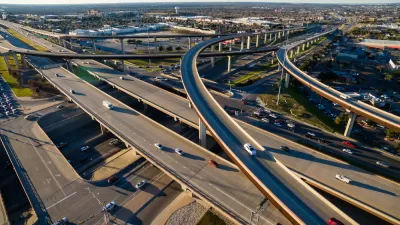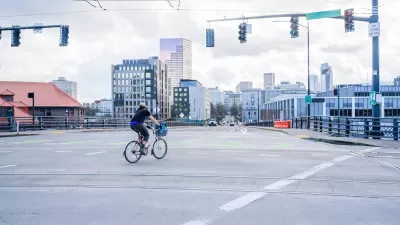Pedal Fort Collins explains the math used to calculate the impacts of various sized vehicles on the roads they travel.

Meg Dunn explains how civil engineers calculate the wear and tear of vehicles on the roadway. "Roads need to be maintained. But some vehicles cause more wear and tear than others, requiring additional maintenance," explains Dunn to set the stage for the discussion.
Dunn lays out the complex set of factors that can influence the state of street surfaces, such as construction materials, vehicle frequencies, vehicle weight, and vehicle speed. When comparing the impacts of various types of vehicles, Dunn suggests the Generalized Fourth Power Law, "which is a rule-of-thumb way to determine the level of damage caused by a particular load" and offers "some sense of how all of the different vehicles on the road compare in terms of how much damage they do to the surface of the street."
Dunn then breaks down the impacts of a sample of vehicle types on roads—everything from a nine-ton big rig to a Toyota Highlander to a Smart Car. Among Dunn's findings: "It would take 410 average sized cars traveling on a road to equal the level of damage caused by one 18,000 pound big rig truck. But it only takes 21 average cars to cause the level of damage created by a single hummer."
The agenda behind the post, however, is to point out the small amount of impact on streets perpetrated by people on bikes. After laying out the math for the impact of bikes, Dunn produces the following assessment: "every time you leave your car at home and take your bicycle out instead, you’re saving the City, and yourself, a car-load of money."
FULL STORY: Which road users make the greatest demands on our tax dollars?

Planetizen Federal Action Tracker
A weekly monitor of how Trump’s orders and actions are impacting planners and planning in America.

Congressman Proposes Bill to Rename DC Metro “Trump Train”
The Make Autorail Great Again Act would withhold federal funding to the system until the Washington Metropolitan Area Transit Authority (WMATA), rebrands as the Washington Metropolitan Authority for Greater Access (WMAGA).

DARTSpace Platform Streamlines Dallas TOD Application Process
The Dallas transit agency hopes a shorter permitting timeline will boost transit-oriented development around rail stations.

Renters Now Outnumber Homeowners in Over 200 US Suburbs
High housing costs in city centers and the new-found flexibility offered by remote work are pushing more renters to suburban areas.

The Tiny, Adorable $7,000 Car Turning Japan Onto EVs
The single seat Mibot charges from a regular plug as quickly as an iPad, and is about half the price of an average EV.

Supreme Court Ruling in Pipeline Case Guts Federal Environmental Law
The decision limits the scope of a federal law that mandates extensive environmental impact reviews of energy, infrastructure, and transportation projects.
Urban Design for Planners 1: Software Tools
This six-course series explores essential urban design concepts using open source software and equips planners with the tools they need to participate fully in the urban design process.
Planning for Universal Design
Learn the tools for implementing Universal Design in planning regulations.
Municipality of Princeton
Roanoke Valley-Alleghany Regional Commission
City of Mt Shasta
City of Camden Redevelopment Agency
City of Astoria
Transportation Research & Education Center (TREC) at Portland State University
US High Speed Rail Association
City of Camden Redevelopment Agency
Municipality of Princeton (NJ)





























